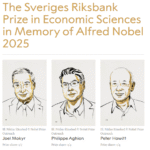Energy, inflation crises risk pushing big economies into recession: Basics Explained

Read:https://www.business-standard.com/article/international/energy-inflation-crises-risk-pushing-big-economies-into-recession-oecd-122092601301_1.html
Global economic growth is slowing more than was forecast a few months ago in the wake of Russia’s invasion of Ukraine, as energy and inflation crises risk snowballing into recessions in major economies (the OECD) the
Organisation for Economic Cooperation and Development stated in its report.
The OECD warned that further disruptions to energy supplies would hit growth and boost inflation.
LEARNING FROM HOME/WITHOUT CLASSES/BASICS
Recession is a slowdown or a massive contraction in economic activities; economic indicators such as GDP, corporate profits, employments, industrial production, real income, and wholesale-retail trade etc., fall; short-term fluctuations when major macroeconomic indicators have shown slowdowns or even outright declining performance.
Economies generally react by loosening their monetary policies by infusing
more money into the system, i.e., by increasing the money supply.
A depression is a deep and long-lasting recession; a severe decline that lasts for many years.
Stagflation is a combination of stagnant economic growth, high unemployment, and high inflation. It creates slow economic growth or a recession, high unemployment, and rising prices. Stagflation is caused by conflicting contractionary and expansionary fiscal policies
Inflation reduces the purchasing power of each unit of currency, which leads to increases in the prices of goods and services over time.; means you have to spend more to fill your gas tank, buy milk. In other words, it increases your cost of living. Central Banks uses monetary policy to manage inflation.
DISINFLATION:
It refers to a situation in which prices are brought down moderately from its higher level without any adverse impact on production and employment.





0 Comments